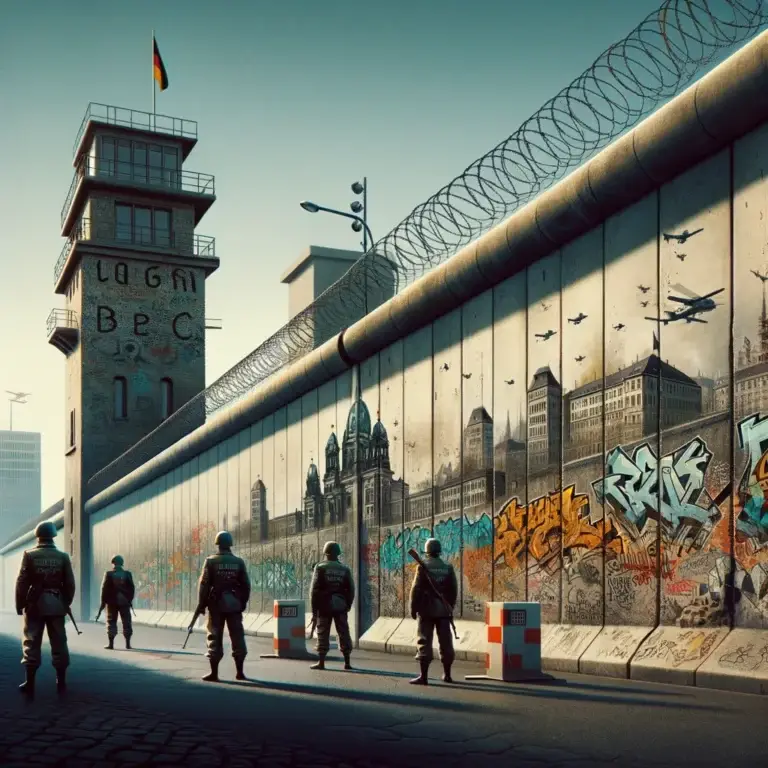Berlin Wall

Table of Contents
Berlin Wall Divides Germany
The Berlin Wall was a barrier constructed by the German Democratic Republic (East Germany) in 1961 to physically and ideologically divide East Berlin (Soviet-controlled) from West Berlin (Western Allied-controlled) during the Cold War.
The wall was erected to halt the massive emigration and defection of East Germans to the West, as well as to symbolize the ideological divide between communism and capitalism. Stretching 155 kilometers (96 miles) through the heart of Berlin, the wall featured guard towers, barbed wire, and other fortifications. Its construction intensified Cold War tensions, but its fall in 1989 became a symbol of the end of the Cold War and the reunification of Germany and Europe.
Berlin Wall Timeline
The Berlin Wall was a barrier that divided Berlin, Germany, from 1961 to 1989, separating East Berlin (controlled by the Soviet Union) from West Berlin (controlled by the Western Allies).
Construction of the wall began on August 13, 1961, and was ordered by the East German government to prevent East Berliners from fleeing to the West. It consisted of concrete walls, guard towers, and barbed wire fencing.
The Berlin Wall was a physical manifestation of the Iron Curtain, the ideological divide between communist Eastern Europe and democratic Western Europe during the Cold War.
The wall stretched for about 155 kilometers (96 miles) around West Berlin, effectively cutting off the city from East Germany and surrounding it with a heavily fortified border.
Numerous escape attempts were made by East Berliners trying to cross the wall to reach West Berlin. Some succeeded, while others were captured, injured, or killed by border guards.
The wall dividing Germany became a potent symbol of the Cold War and the division of Germany and Europe into communist and capitalist blocs.
In June 1987, U.S. President Ronald Reagan famously implored Soviet leader Mikhail Gorbachev to “tear down this wall!” during a speech near the Brandenburg Gate in West Berlin.
Following massive protests and political changes in Eastern Europe, the East German government unexpectedly opened the border on November 9, 1989. This event led to jubilant crowds gathering at the wall, and people from both sides began dismantling it.
The fall of the Berlin Wall symbolized the end of the Cold War and paved the way for German reunification, officially occurring on October 3, 1990.
Today, remnants of the wall in Berlin serve as memorials and reminders of the division and reunification of Germany, as well as the struggle for freedom and democracy during the Cold War er
Related Links
Berlin Airlift
Cold War
Unification of Germany
World War I